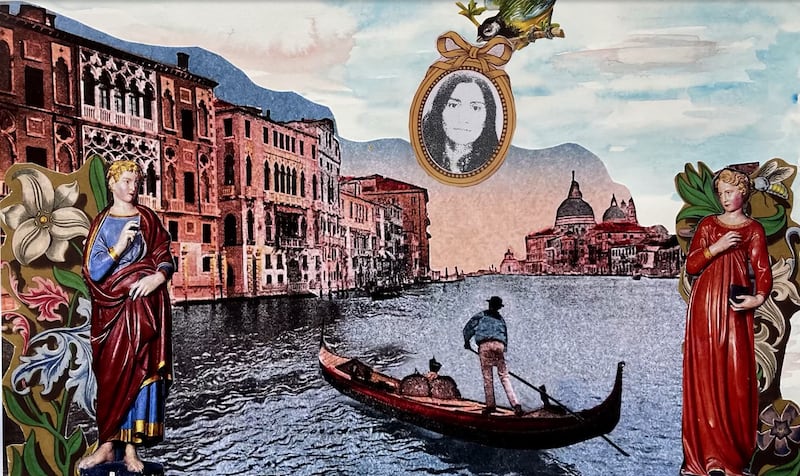A new virtual gallery, Iterarte, is enabling access to works by artists from countries across the Mediterranean to South Asia – a region that was historically linked by empires and trade routes.
“There’s an exchange across millennia – it’s the world of antiquity, the Silk Routes, and more recently, diasporas and migration,” says Tamara Chalabi, the Iraqi author and veteran arts supporter who founded Iterarte with the Indian entrepreneur Shilpa Sharma.
Iterarte is organised both as a magazine – with features, podcasts, videos and even playlists curated by artists – as well as a sales gallery, selling (and shipping) art to online buyers. The pair are currently working with 18 artists, though not with exclusive representation. Rather, they will sell bodies of work that have been consigned to Iterarte, and commission new projects in a section called Variations in which artists render existing works in different mediums.
The platform launched last week with an exhibition of works by New Delhi artist Nidhi Khurana, within a former coach house in the ritzy Mayfair area of London. It is one of a number of exhibitions the pair plan to host at different locations.
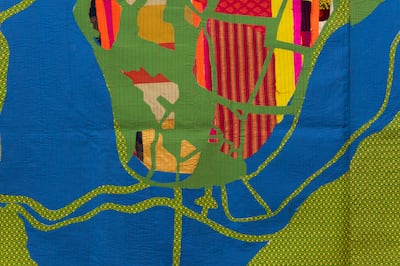
The show, Traces of Existence: Place Between Places, is an apposite choice for the project’s start. Khurana is inspired by maps, which she renders in bright-quilted textiles on slate and metal, in hand-made work that finds the artist sifting through memories.
The process echoes the twin goals for Iterarte, as the platform reaches across the region to find connections and shared working patterns – and hopefully, new artists and collectors.
“The art world can sometimes be a closed loop,” says Chalabi. “Many of the same artists are featured in different biennales. That makes it very hard for regional artists to break in, especially those from art scenes that are closed off for economic or political reasons. Name one internationally known Iraqi artist who actually lives in Iraq. The same probably applies to many other places as well.”
Chalabi started the Ruya Foundation in 2012, which was for a long time a rare source of financial support and independent exhibition space for artists in Baghdad. Later, with Ruya Maps, she looked to other countries whose cultural scenes were facing the after effects of conflict. While Ruya continues, Chalabi is also keen to expand the international profile of the artists she worked with through these projects.
Seeking out new collectors also entails democratising the process, they argue.
“There are a lot of people out there who want to buy art but don’t know how,” says Sharma. “The access is not there for artists – and sometimes it’s not there for collectors either.”
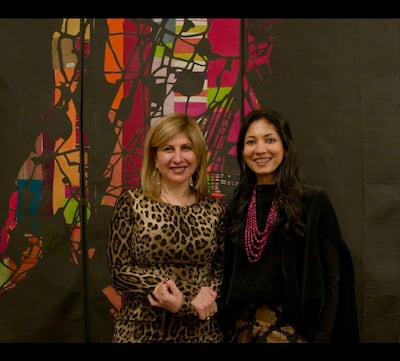
In this, Iterarte joins a number of online ventures that have emerged in recent years – all promising price transparency and openness in an effort to combat the barrier to entry that is often perceived in mainstream galleries. These platforms have been buoyed by the fact that an increasing share of art is now sold online, particularly since the pandemic. According to the latest Art Basel and UBS sales report, online buying now accounts for 18 per cent of art sales, almost double the pre-pandemic level.
Artsy, which launched in 2012, has virtually hosted works by more than 100,000 artists; smaller outfits such as Artmother, which was launched by the former Flash Art editor Michael Polsinelli, have since followed suit.
All of these use editorial programming as a way to bring readers in and to allow would-be collectors insight into artists’ practices. If one long-standing critique of art magazines such as Frieze and Artforum was that they were simply advertorials for gallery artists. These ventures are cutting out the middleman – read the article, buy the work.
But they are also looking to operate in novel ways in the art space. Artsy runs an online fair and commissions art-market research. Iterarte, which has a more curatorial remit, is looking to directly collaborate with artists, and to support the region by commissioning content in texts, podcasts, and video. The editorial coverage, directed by Laura Egerton, will not be limited to the artists that Iterate sells.
Iterarte’s most interesting strand, Variations, works directly with artists to help them realise an existing work in another medium – a painting that might be rendered in embroidery, or a collage in mosaics.
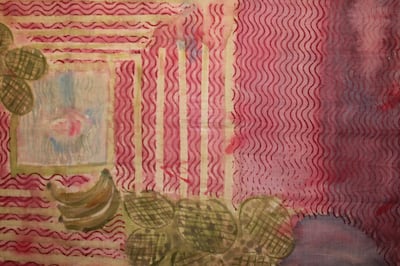
The choice of medium will be up to the artist, who Iterarte supports by pairing him or her with artisans and craftspeople with whom they have existing relationships. They hope this will have the added effect of supporting potentially endangered craft practices.
Greek artist Lydia Delikoura chose to render her painting The Banana Falls Very, Very Far from the Tree (2022) into block-printing, collaborating with artisans from Jaipur.
The artisans created wood blocks based on the repeating motifs of her painting, separating her composition out into layers which they printed one after another, working by hand on cotton fabric.
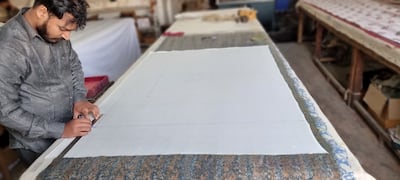
Variations also underlines the shared cultural traditions of Iterarte’s geographical remit. Craft practices and idioms traverse the area; with Variations, the pair are testing what craft can add to contemporary work when artists are given the chance to explore beyond their national or even technical boundaries.
“We are trying for lateral, horizontal thinking,” says Chalabi. “In the way that one word will appear across the Mediterranean, in subtle shifts in Arabic, Persian, Turkish, Greek – we want to do this for art.”
“We want to take the regionalism out of the region,” says Sharma.
